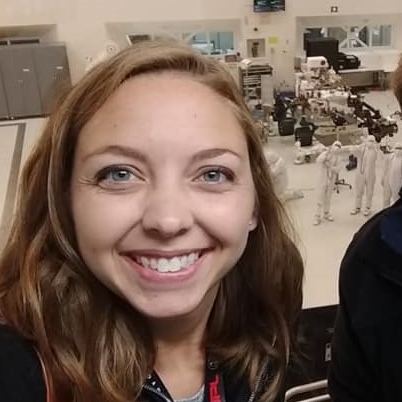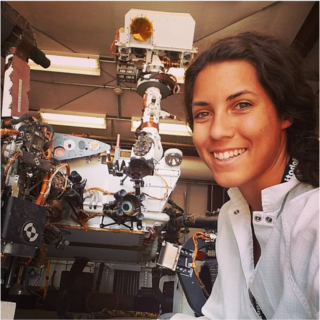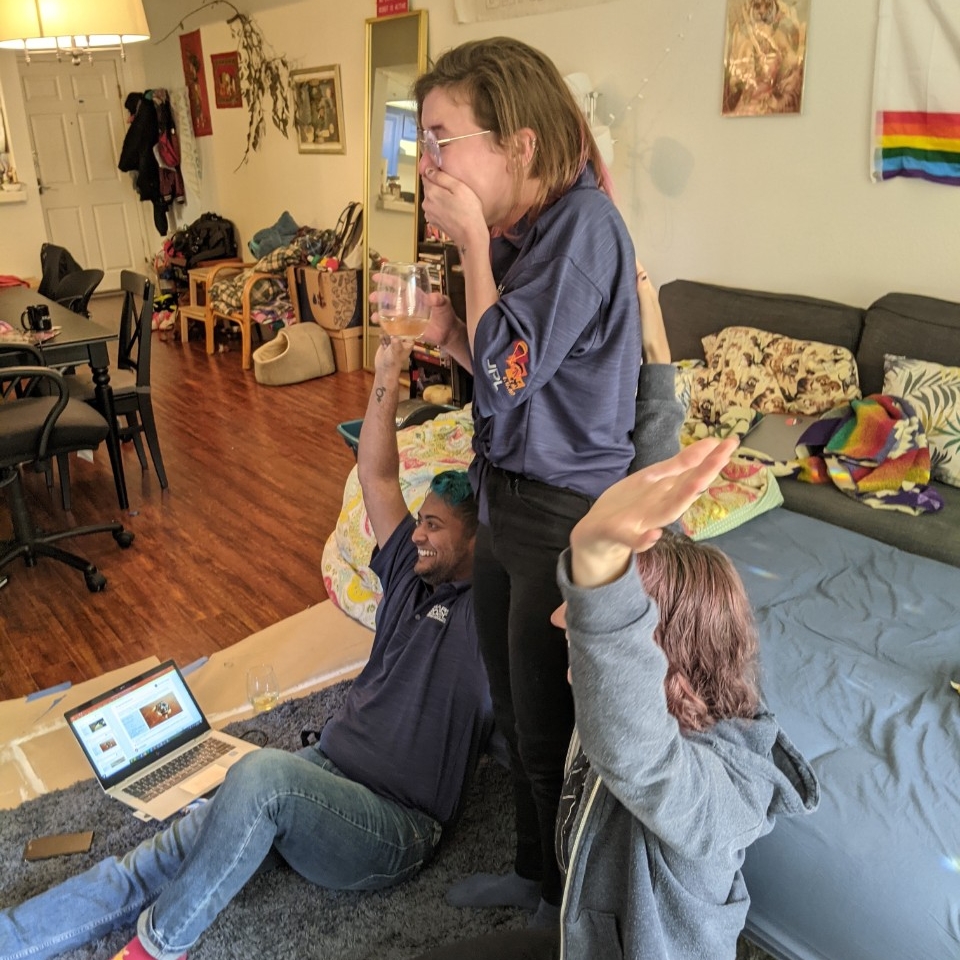
Mission possible: Perseverance and the path to Mars
Co-op experience launched three UC grads into a rarefied universe
By Cindy Starr
As the Mars rover Perseverance hurtled toward its destination in February after years of preparation and a seven-month, 300-million-mile spaceflight, emotions ran deep among three recent University of Cincinnati graduates.
Each had a personal stake in NASA’s historic mission to Mars. And although the COVID-19 pandemic prevented them from taking part in a large, celebratory gathering that normally accompanies these milestone events, not even coronavirus could spoil the exhilaration the College of Engineering and Applied Science alumnae felt on that long-awaited day.
Stephanie Mitana, class of 2016, watched NASA-TV in a friend’s living room in Pasadena, Calif., and began crying “very happy tears” 15 minutes before the landing.
When mission control announced, "Touchdown confirmed — Perseverance is safely on the surface of Mars," Mitana leaped into the air.
Rebecca Matthews Perkins, class of 2013, watched with family members in San Diego. She cried as a huge wave of relief rolled over her.
And Sophia Mitchell, class of 2015, watched with her dog while texting and video-chatting with friends. She was overcome with a mixture of “triumph, disbelief, relief and pure joy!”
The three CEAS alumnae are employed at the Jet Propulsion Lab, a NASA center run by the California Institute of Technology (Caltech). They were among the thousands of engineers and scientists who envisioned, built, tested, launched and landed Perseverance.
UC graduate Charles Dandino, class of 2011, also worked on the Mars 2020 project.
The rover’s mission is to search for signs of ancient life and collect rock and soil samples that NASA hopes eventually will be brought back to Earth.
Lew Soloway, class of 1971, a semi-retired mechanical systems manager at NASA who brought Mitana, Perkins, Mitchell and Dandino to the Jet Propulsion Lab as co-op students, said he is immensely proud of this group of next-generation engineers who will lead the lab in the years ahead.
“They have all shown they are as well prepared as any other engineers on lab,” Soloway said in an email.
The work produced by the UC alumni for the Mars 2020 Mission is part of a story that is still unfolding.
Creating a harness for flight
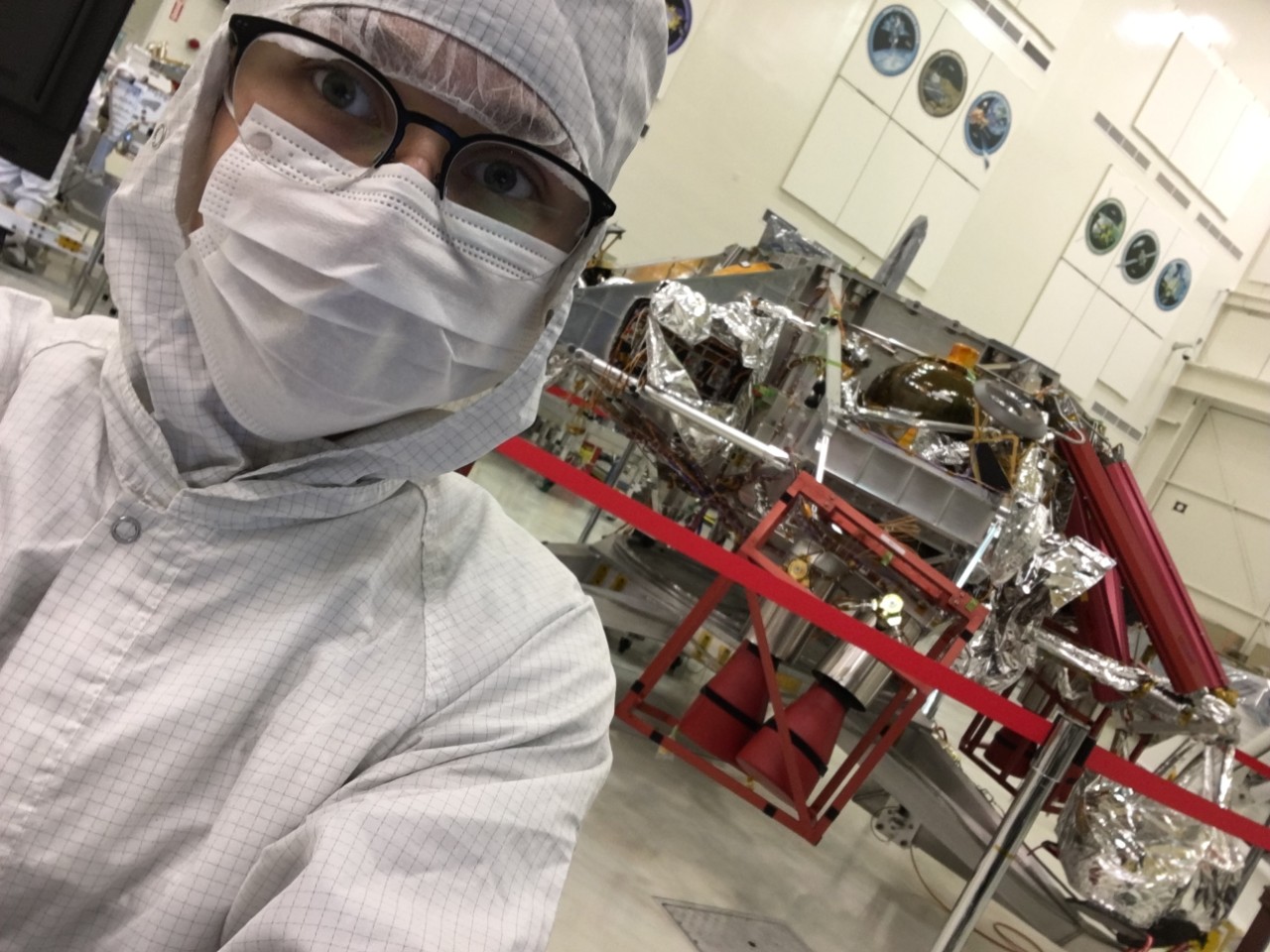
Stephanie Mitana working on the Mars 2020 spacecraft in the Jet Propulsion Lab.
Mitana has already seen “all the hardware I worked on do what it’s supposed to do.”
A harness engineer, Mitana was responsible for ensuring the integrity of hundreds of wires and cables on the spacecraft that helped with the rover’s cruise, descent, entry and landing.
“A harness engineer is not something a lot of people know about,” Mitana said. “It’s a lot like organizing the cables behind your entertainment center at home. So you have all of these wires that need to be connected in. At home, it’s like, 'Oh, I need to connect my TV to power, and connect my DVD player to the TV, and my cable box,' and so on. And you end up with five different cables behind the TV and you need to make sure that they’re all organized and go to the places they need to go to in order to work.
“My job is to do that, but on a spacecraft that is leaving Earth. So it’s pretty much laying out all the wiring that needs to be on the spacecraft in order for everything to get power and all the signals between different instruments to be able to talk to each other.”
More than 100 harnesses carried the car-sized, 2,260-pound rover during its flight to Mars, with wires as long as 20 feet and with some harnesses containing more than 100 connectors.
“It ends up being this huge spider web if you were to lay it out flat,” Mitana said.
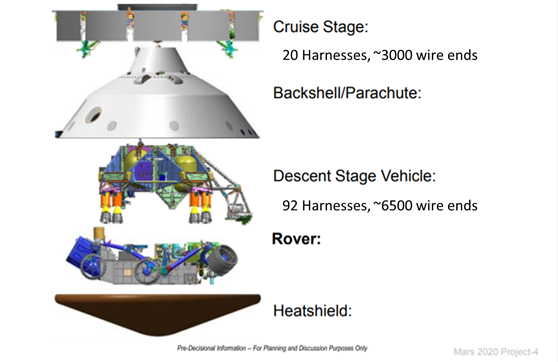
Mitana was responsbile for wiring the harnesses of the rover for the cruise and descent stages.
Collecting samples in a new way
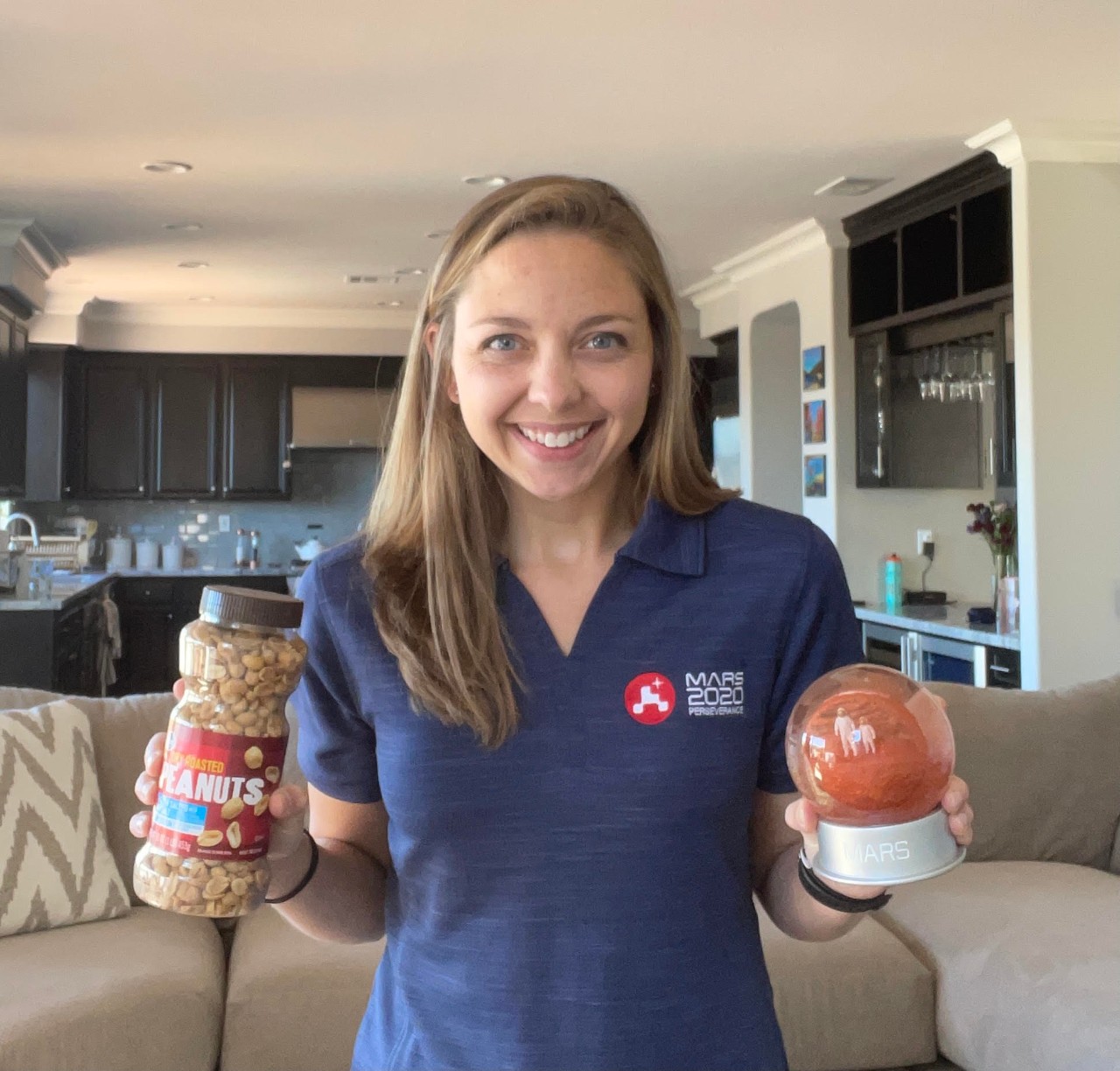
Rebecca Perkins, lucky peanuts in hand, prepares to watch Perseverance’s final approach to Mars. Peanuts have been considered lucky at NASA’s Jet Propulsion Lab ever since the Ranger 7 mission in 1964. Because that mission followed six previous failures, the mission trajectory engineer decided to hand out peanuts to relieve anxiety among his team. The mission succeeded, and a superstition was born.
Perkins, who served as the cognizant engineer on her team, designed a system that will be set in motion in the next few months. Her contribution involves the mission’s sampling caching sub-system.
“I like to describe it as a fancy Pez dispenser, but instead of stacks of candy, mine has little caps for the sample tubes,” Perkins said.
“Once the sample tubes have a rock core in them, there’s a mini robotic arm inside the rover that takes these sample tubes and manipulates them over to my little dispenser mechanism. It goes up and a little cap pops out and onto the tube, which is then brought to another station where it’s sealed up.”
Perkins began designing the mechanism from scratch in 2015, drawing sketches on a whiteboard. Her quest included – why not? – taking apart and studying a Pez dispenser as well as a clicky pen.
“Lots of concepts didn’t work,” Perkins said. “But eventually I had something that sort of worked, so I 3D-printed some things and had prototypes built. And over the course of several years the design matured, and we got our final design fleshed out around 2018.”
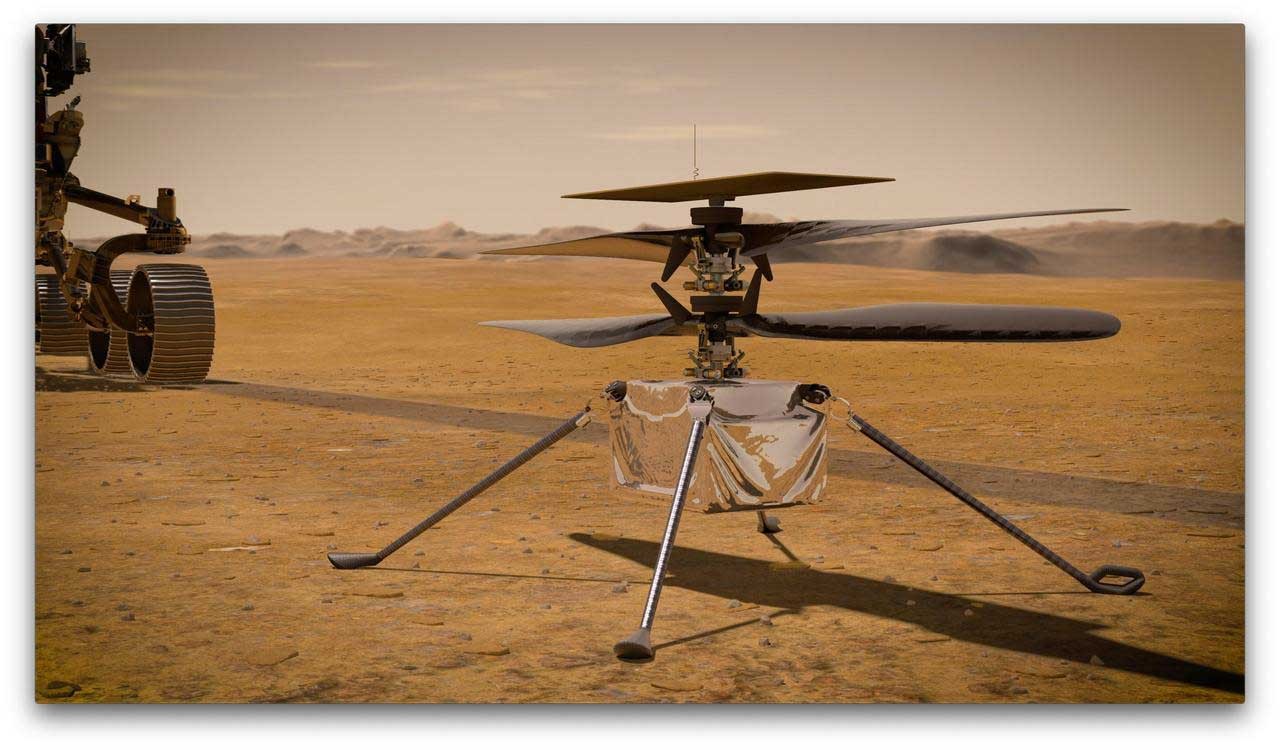
NASA's rover Perseverance is scheduled to deploy a helicopter called Ingenuity in April for the first powered flight on Mars. Graphic/NASA/JPL
The Perseverance mission aims to have at least 20 sealed sample tubes left on the surface of Mars, where they eventually will be collected by a proposed future mission – Mars Sample Return.
“We’ve never done that before,” Perkins said. “We’ve never brought back anything from another planet.”
Mitchell, whose work coincides with that of Perkins, served as lead systems engineer for the Gas Dust Removal Tool on the rover’s robotic arm. The tool is an instrument that uses pressurized gas to remove sediment so that coring samples and the rover’s scientific instruments can be as precise as possible.
Mitchell honed her skills for the Mars mission in 2017 while working with the Curiosity rover team. Curiosity, Perseverance’s rover predecessor that launched in 2011, continues to explore Mars after more than 3,000 full Martian days, or sols, and has sent back more than 750,000 raw images of the red planet.
As part of the Curiosity team, Mitchell helped develop a new algorithm for drilling on Mars after Curiosity’s feed mechanism broke. She later joined a team that is responsible for the operation and safety of Curiosity’s robotic arm and turret instruments. At the same time, she trained to become a rover planner, becoming “one of the people responsible for driving Curiosity as well as using the robotic arm, drilling on Mars and helping plan sampling campaigns.”
Mitchell continues to work as a deputy lead Rover Planner for Curiosity while supporting her project as a systems engineer on Perseverance.
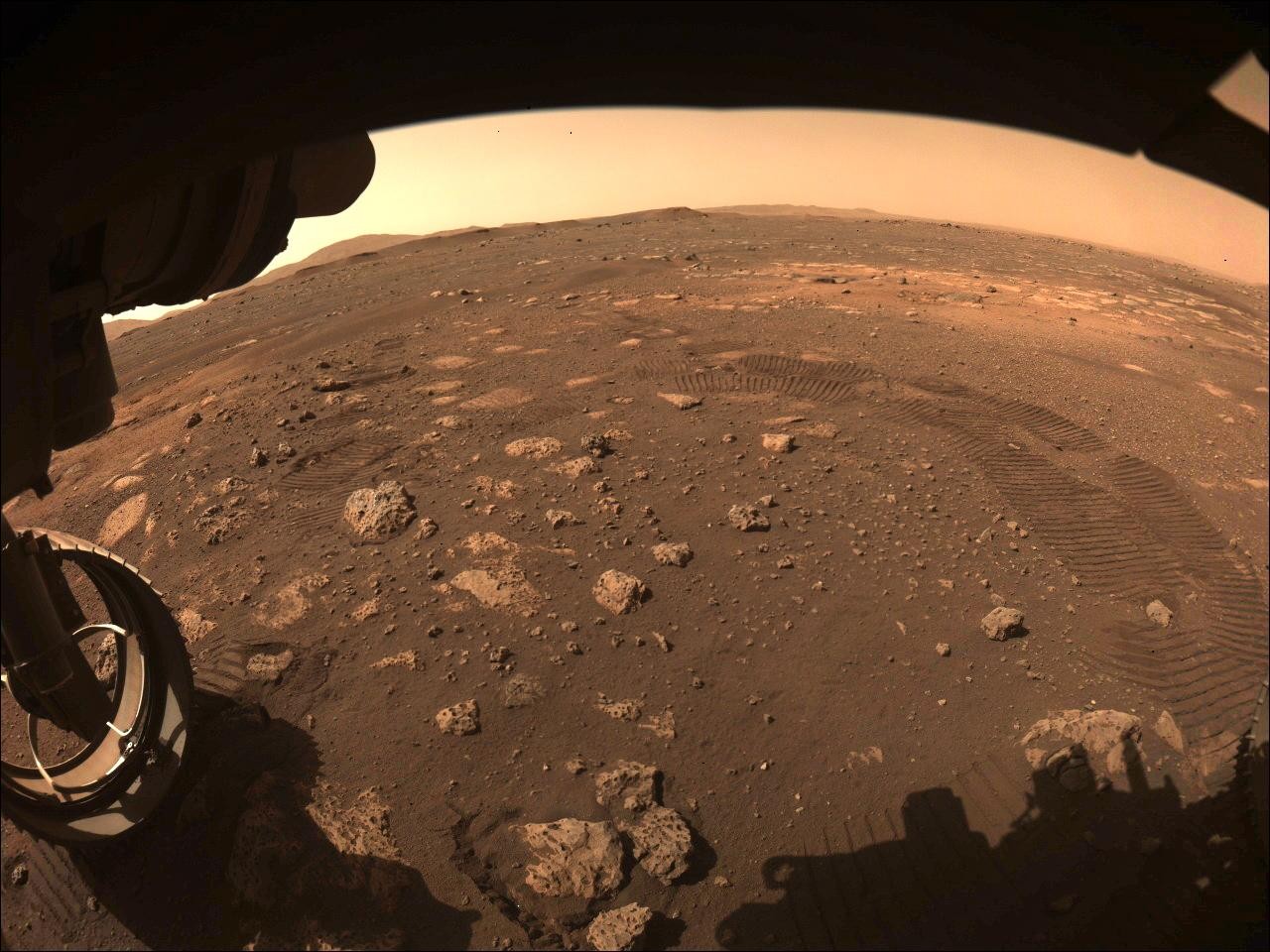
NASA's Perseverance rover captures its own tracks in the Martian sand during its first operations on the red planet in March. Photo/NASA-JPL-Caltech
UC co-op as launchpad
Mitana, Perkins, Mitchell and Dandino share a bond dating to their co-op experience at UC. All were undergraduates in 2012 when Soloway, then deputy manager of NASA’s Mechanical Systems Engineering, Fabrication, and Test Division, came to UC on an “influencing” mission for the federally funded Jet Propulsion Lab. At that time, Soloway said, JPL recruited engineers mostly from Cornell University and Rensselaer Polytechnic Institute, while today it acquires talent from institutions that include Caltech, MIT, Princeton and Georgia Tech. UC, he noted, was not on JPL’s radar in 2012.
“My task was to interview kids and connect them with the right people at JPL,” Soloway said. “I was an influencer, not a hirer, even though I was a senior manager at the time. I was happy to find some outstanding young students for JPL.”
JPL subsequently contracted all four to full-time positions.
Another CEAS co-op student, Adam Herrmann (BS, aerospace engineering ,class of 2019), followed the four to JPL and is currently working on his PhD at the University of Colorado.
I saw Mars, shining there, and it was like, wow, my hardware is up there.
Rebecca Matthews Perkins, UC College of Engineering and Applied Science graduate
For Perkins, the chance to interview for an internship at NASA arrived like divine intervention. Having just learned that she could not return to her previous co-op with Gulfstream Aerospace Corp. because she was too close to graduation, a panicky Perkins scheduled an appointment with her advisor. “I said, ‘I can’t go back there; I need your help. Where do I go from here?’ And he pulled up the listing. And I’ll never forget his saying, ‘How would you like to live in California?’”
Until then, Perkins had not envisioned a career at NASA. “I know a lot of people have always wanted to work for NASA; it’s their lifelong dream,” she said. “I wasn’t one of those people. Not that I wasn’t interested. I hadn’t figured out where I wanted to end up. I didn’t know I would end up doing space exploration. It wasn’t on my to-do list. But when I was presented with the opportunity, I said, oh yeah, sure!”
Like Perkins, Mitana had not dreamed of working for NASA, but excelling at loved math in high school was encouraged to consider a career in engineering. “But it turns out the engineering road is way bigger than I expected it to be,” Mitana said. I originally went into a different school of engineering and bounced around a bit. Then I ended up in the aerospace program.”
Also like Perkins, Mitana had set up a meeting with a co-op advisor who said, almost offhandedly, “Oh, someone from JPL will be here next week. I’m going to schedule you for an interview with him.”
“So I got really, really lucky in that I set up the appointment with my advisor at the time that I did,” Mitana said.
Perkins said she wouldn’t be where she is today without the opportunities presented by UC’s dedicated co-op office. “It takes the load off of the student to make that happen. There’s so much going on when you’re in college; you’re involved in so many things. Having that office dedicated to getting you that key part of your education and preparation for your career is necessary — and super valuable.”
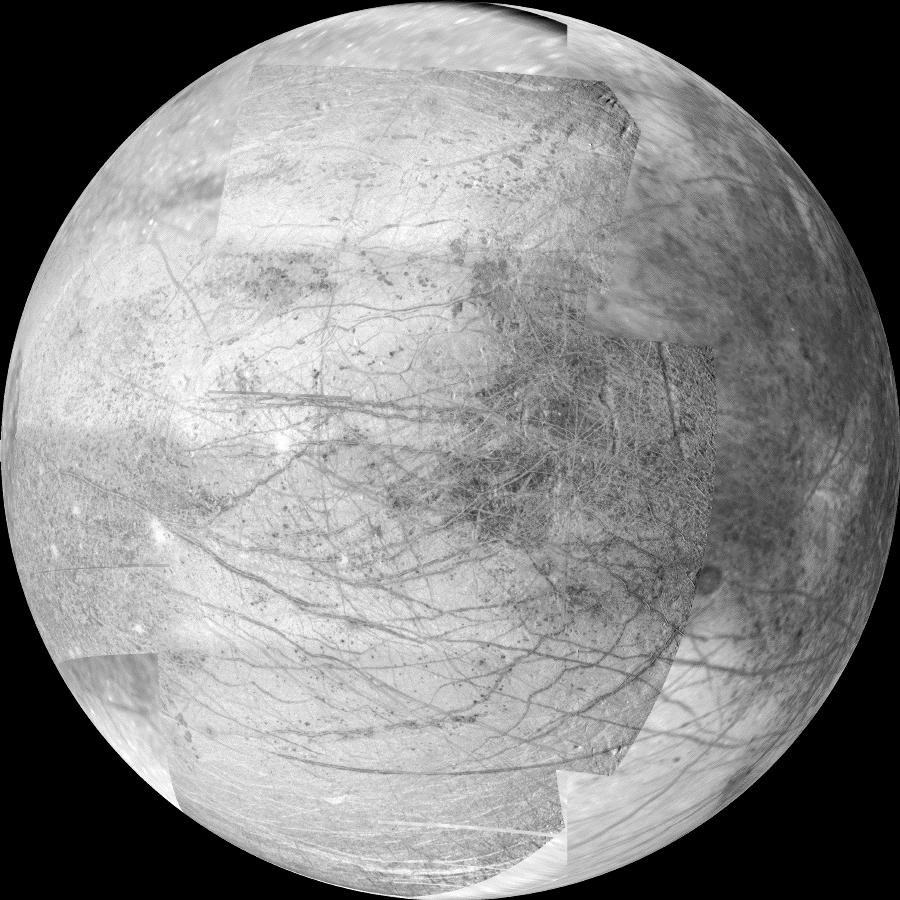
One of Jupiter's moons, Europa. Composite photo/NASA/JPL/University of Arizona
Next stop: Jupiter’s Europa
While Mitchell continues work on the Perseverance and Curiosity rovers, Mitana and Perkins have moved on to separate projects related to Europa, one of Jupiter’s many moons. Perkins, who is working remotely from San Diego, describes Europa as “a really cool, icy world” that scientists think harbors an enormous saltwater ocean under its thick, icy crust. While Mitana is working on the internal harness for the Europa Clipper, a spacecraft that will orbit Europa, Perkins is working on a proposed, subsequent mission, Europa Lander, which would actually land on the moon.
The Europa Clipper may depart as soon as 2024, but the journey will take six years. “So even after you launch, you still have this super long time to wait to see if it works,” Mitana said. “For Perseverance it was seven months, and even that felt too long. It was like, I need to know if it’s going to work! So six years is going to feel like forever.”
In the meantime, UC’s rover alumni can bask a moment in the Mars-light.
Hours after the landing, Perkins sat on her back patio and looked up at the sky. “That was the night that Mars was really close to the moon,” she said. “And I saw Mars, shining there, and it was like, wow, my hardware is up there. I’m looking at it, millions of miles away. It’s on a rover on another planet. That was very cool to see and think about.”
Feature Image (landscape): Stephanie Mitana (in glasses) with colleagues during work on the Mars 2020 spacecraft’s harness system at the Jet Propulsion Lab.
The UC Alumni Association exists to serve the University of Cincinnati and its 320,000+ alumni across the United States and throughout the world. Learn more about how to stay connected with your alma mater and get involved in more than 50 college-, interest- and location-based alumni networks, including the UC College of Engineering & Applied Science Network and Women of UC.
Related Stories
Driven to serve
April 17, 2025
A UC Clermont criminal justice alum fulfills her childhood dream of becoming a police officer.
PHOTOS: UC students help baby geese get to safety
April 16, 2025
UC biology students on Wednesday helped a family of Canada geese get from a sixth-floor skyway to the safety of the ground in an annual spring ritual. The geese have nested there for the last five years.
UC's first Marian Spencer Scholar set to graduate
April 16, 2025
Katelyn Cotton, an alum of Cincinnati's Walnut Hills High School, is the first Marian Spencer Scholar to graduate from the University of Cincinnati. Cotton, a political science major, will return for graduate school. She hopes to attend law school in the future.
